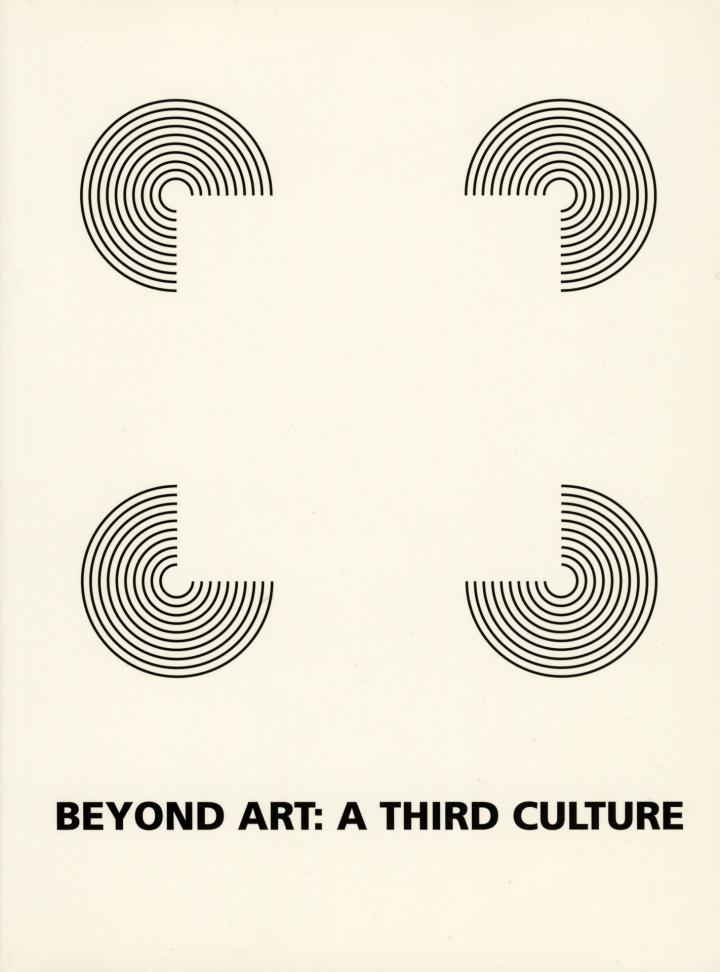Sean Cubitt, Paul Thomas (eds.): Re:live: Media Art Histories 2009 (2010)
Filed under proceedings | Tags: · art history, history of science, history of technology, media art
Proceedings from the Third International Conference on the Histories of Media Art, Science and Technology held in December 2009 in Melbourne, Australia. The event followed the success of the two previous Media Art History conferences, re:fresh (Banff 2005) and re:place (Berlin 2007).
Publisher, University of Melbourne & Victorian College of the Arts and Music, 2009
Creative Commons Attribution-Noncommercial 2.5 Australia license
ISBN 9780980718638
Peter Weibel (ed.): Beyond Art: A Third Culture. A Comparative Study in Cultures, Art and Science in 20th Century Austria and Hungary (2005)
Filed under book | Tags: · art, art and science, art history, austria, computer art, conceptual art, cybernetics, history of science, hungary, mathematics, media art, philosophy, psychoanalysis, technology

“Austria and Hungary in the 20th century were nations that made enormous achievements in the formal sciences and arts: abstraction, logic, mathematics, physics, positivism, psychoanalysis, cybernetics, constructivism, economics, art, media art, and concept art. Art and science are usually divided into two different cultures, and nations, too, are seen as having separate ones. This book delivers a new model of consilience and convergence of art and science by closely studying in a material historical way by using a multitude of original papers and contributions, photographs, documents, bibliographies, biographies, and survey essays, the mutual influence of art and science in Austria and Hungary. In fields ranging from Gestalt psychology to Quantum physics, from constructivism to theories of vision, from holography to cyberspace, we discover a multitude of ideas, books, movements and personalities that have deeply influenced the world. Richly illustrated, the book is a nearly invaluable sourcebook, in which a new method, resembling more a CD-ROM narration than a dictionary, has been used to map an unknown horizon of knowledge. Those involved in the history of science or art and in the field of cultural theory, will find an incomparable frame of reference and information. They will discover not only genius, talents and themes they have not been aware of, but also a new model of culture, a third culture. The book is graphically and structurally user-friendly with a synopsis for each chapter, models, diagrams, images, corolaries and index etc.”
Publisher Springer, Vienna, 2005
ISBN 3211245626, 9783211245620
616 pages
PDF (40 MB, updated on 2019-10-30)
Comments (2)Wolfgang Lefèvre (ed.): Picturing Machines 1400-1700 (2004)
Filed under book | Tags: · architecture, data visualisation, drawing, engineering, geometry, history of science, history of technology, media archeology, science, technology

“Technical drawings by the architects and engineers of the Renaissance made use of a range of new methods of graphic representation. These drawings—among them Leonardo da Vinci’s famous drawings of mechanical devices—have long been studied for their aesthetic qualities and technological ingenuity, but their significance for the architects and engineers themselves is seldom considered. The essays in Picturing Machines 1400-1700 take this alternate perspective and look at how drawing shaped the practice of early modern engineering. They do so through detailed investigations of specific images, looking at over 100 that range from sketches to perspective views to thoroughly constructed projections.
In early modern engineering practice, drawings were not merely visualizations of ideas but acted as models that shaped ideas. Picturing Machines establishes basic categories for the origins, purposes, functions, and contexts of early modern engineering illustrations, then treats a series of topics that not only focus on the way drawings became an indispensable means of engineering but also reflect the main stages in their historical development. The authors examine the social interaction conveyed by early machine images and their function as communication between practitioners; the knowledge either conveyed or presupposed by technical drawings, as seen in those of Giorgio Martini and Leonardo; drawings that required familiarity with geometry or geometric optics, including the development of architectural plans; and technical illustrations that bridged the gap between practical and theoretical mechanics.”
Publisher MIT Press, 2004
ISBN 0262122693, 9780262122696
347 pages
PDF (updated on 2019-12-2)
Comment (0)
